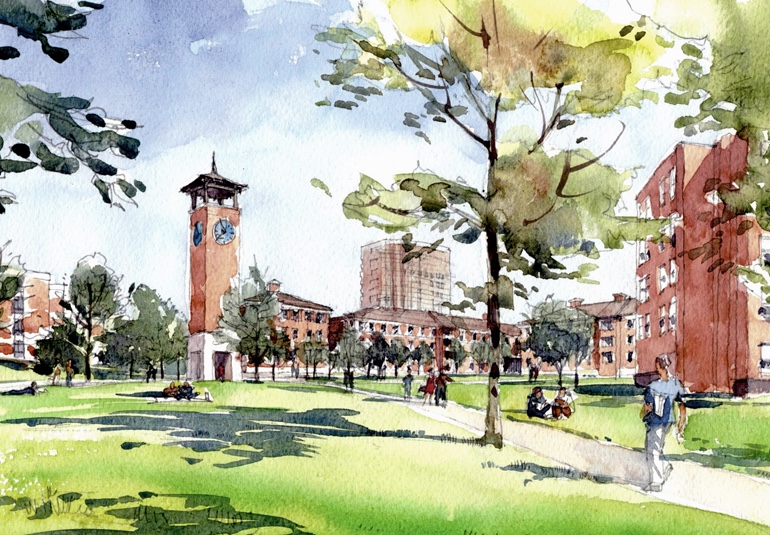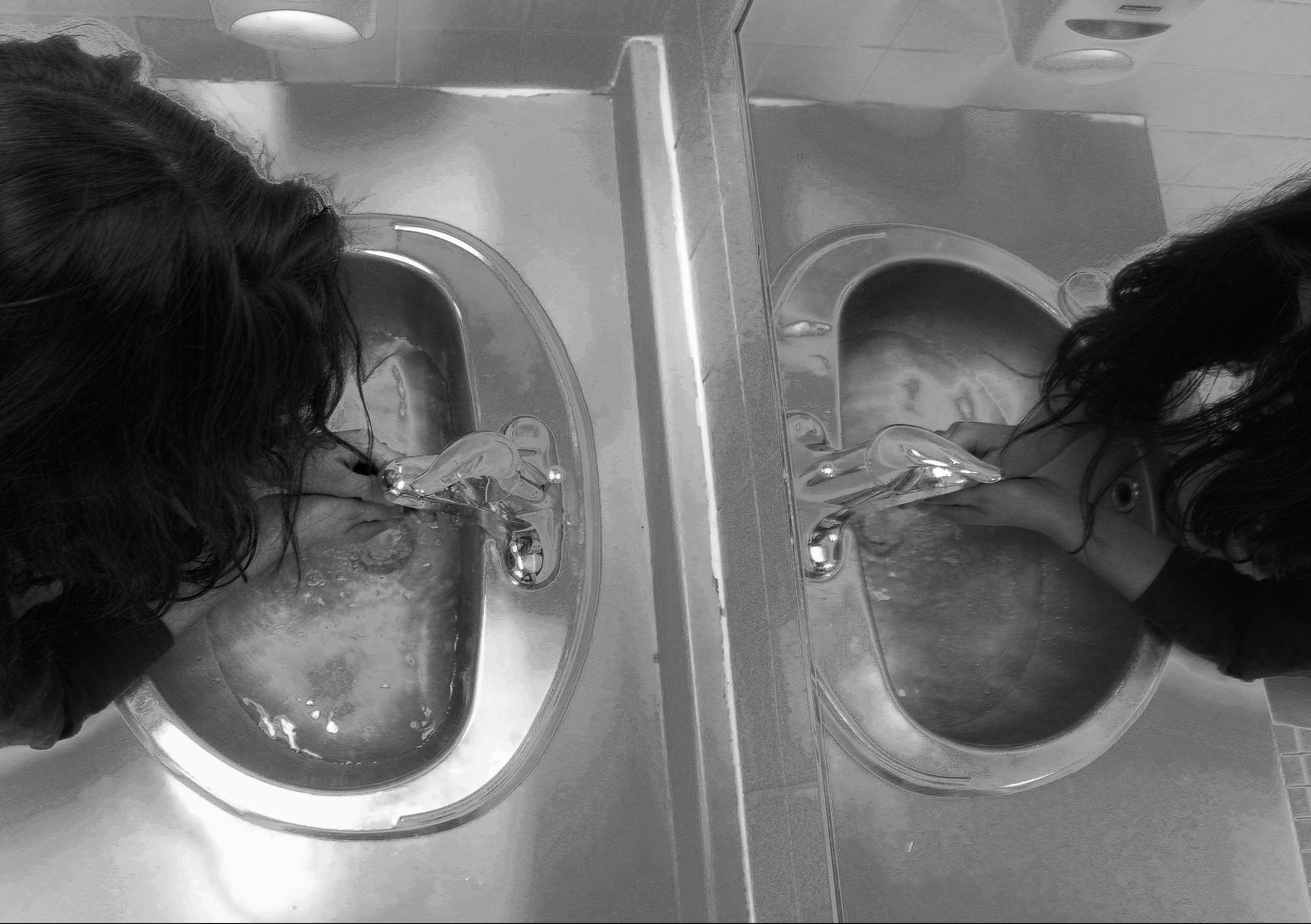Our university has always been a residential one. If you come to Acadia you live in residence. That was part of the deal at least for the first year or two. Living in residence is one of the quintessential tenants of the university experience, along with embarrassing dances during Welcome Week, late night pizza runs, and raucous end of class celebrations. The way residence has been done hasn’t changed at Acadia for a while, simply because it’s been done well.
Beginning as a primarily residential university, Acadia almost always housed undergraduates on its campus. Some of the first students lived in the Horton Academy Boarding House, then a separate entity from Acadia College. Situated right behind University Hall’s predecessor, which burned down in 1877, it was only supposed to be a temporary measure supplemented by the completion of Acadia’s boarding house. This building suffered a similar fate and burned down in 1887. By then Chipman Hall existed, built near Horton Academy to support the influx of students.
The Acadia Ladies’ Seminary was opened in 1879 with the intent to house the growing number of female students. Both Seminary and the new College Hall were built approximately the same time, with Seminary described as “without a rival of its kind in the Lower Provinces, perhaps in the Dominions” by Albert Coldwell, Wolfville town clerk and university professor. When Acadia College became Acadia University in 1891 the fledgling university was building its residential capacity. The Academy Residence, now Horton Hall, Whitman Hall (Tully) and Willett House all opened in 1915 to help ease the strain of new students.
Little building occurred until the end of the Second World War, when War Memorial House (Barrax) was opened. A building spree began at Acadia in the 1960s, injected by generous funds from the provincial government. Chipman House, Dennis House, Eaton House, Chase Court, Crowell Tower, and Cutten House were all opened within a 25-year period. Christofor Hall and Roy Jodrey Hall were recent additions, opening in 2002 and 2003 respectively.
Challenges have emerged with the system. Some describe their residences as overwhelming, others as isolating. There is a chronic lack of student supports on campus, necessitating appointments at the student clinic and mental health centre be booked months in advance. Some residences have even been declared uninhabitable- Raymond House was evacuated early in the 2017-18 academic year due to exposed wiring and living hazards. Students who move off campus report a disconnect with their on-campus counterparts. Numerous residences suffer from underequipped facilities and a chronic lack of funding to address key issues.
The residential college system gives us an answer.
The move to a residential college system was one envisioned in the early 2000s by then-President Kelvin Ogilvie. The Campus Master Plan envisioned a grand total of 5-6 colleges at Acadia, each one composed several halls for a grand total of 400 students per college. Colleges are not buildings- they are societies. The goal of each is to create a decentralized self-sustaining community within the university that has the resources to take care of its students. With a central administration that is at times strapped for cash the time is now to take matters into our own hands and work for our own wellbeing.
This is not to say that the system does not work. Rather, this is to say that the system can be better. Ask our Director of Student Services, James Sanford.
In a Spring 2003 edition of the Acadia Bulletin, he wrote about the exciting next step in Acadia’s future. He noted that “the college system is intended to create small communities- ‘colleges’- within the broader university community. The college promotes the University’s mission, goals and objectives while tending to the specific needs of the students who live within the college. Each college has a distinct physical space, its own administrative structure and a social rhythm.”
Despite Acadia’s small size, he noted that “the residential college system will allow us to bring our hands-on approach to an even more manageable level”. The first envisioned college on campus was ‘West College’, composed of Eaton House, Christofor House, Roy Jodrey Hall, and Chipman House. Coupled with the creation of Clark Commons, the goal was to provide a hub for fitness, recreation, and social activities within the wider university. It was supposed to open in 2003.
The proposed development of a residential college system under the Residence Advantage Program would have seen the construction of six new residences and five new commons buildings across campus from 2003-2008. Ideally 75-80% of all Acadia students would stay on campus for all four years, working their way up through different styles of residences. In creating such a system, the goal was to become North America’s premier residential university modelled after the finest universities in the United Kingdom and the United States.
Our university has since evolved. President Gail Dinter-Gotlieb halted any changes to the proposed residential college system and since then the project has stalled.
I propose we pick it up.
The process would start with the creation of 5-6 college organizations. Each would be led by a Head, who would be a faculty member that oversees the administrative functions of the college and report to the administration. An advisor would work within the residence and be responsible for student welfare, ensuring that students are simply doing well. Naming the colleges would be easy- Ogilvie, Burnham, Ivany, DeWolfe, Perkin, and Oliver are only a few of many names to choose from.
Next would be creating the physical space. After all, the same architects who redesigned Yale’s newest residential colleges also designed the KCIC. West College already has all the facilities they need. It would be up to the administration, donors, and students to decide how the remaining colleges looked. The construction of new residences in the fields between Chase Court and Crowell Tower provide the opportunity for brand new colleges to be constructed and bring more students on campus through apartment style living or suites.
Each college would have a variety of living arrangements, so older students could live in on-campus apartments undisturbed by nosy RAs. Because a college is more than a building, but a society, each student would move from first year residence to a second-year residence, to upper year private apartments with friends of their choosing, while staying on campus.
Each college would be unique, tailored to its history, culture, and traditions. Endowments would be set up for each college, with students paying a small College Fee at the beginning of the year. Within ten years each college would have a flourishing endowment that would be able to sustain its students through scholarships, continued infrastructure improvements, and social supports. Existing residences would come together to build their own college communities. Tully and Seminary? Cutten and Tower? Chase Court and Raymond? The possibilities are endless.
Developing an academic culture would be crucial. Every student at Acadia, regardless of whether they were on or off campus or first or fourth year, would be made a member of a college. This would give all students a community spanning across the entire university community and beyond, in addition to giving them privileges to use each college’s respective facilities. Colleges would represent a microcosm of the university, composed of first to fourth years from all regions and all programs to ensure genuine diversity.
I believe that a college system represents the future of Acadia. Even if it doesn’t take the form envisioned 15 years ago, a gradual shift that encompasses greater academic involvement with residences, establishment of endowments, and resources available to each community would be beneficial to the university as a whole. If Acadia still desires to be North America’s premiere residential university then we must dare to dream and do something different.
If we want to be great, let’s stop saying it and start doing it.
Colin Mitchell is a fourth year (Honours) Politics student and Editor in Chief of The Athenaeum






I don’t really think the school should be trying to act like the parent of grown adults, creating little isolated bubbles for students while trying to take care of their every need and trying to manage their lives.
I’d be terrified if I was forced to live in one of these things, with advisors constantly nosing into my “wellness” (which is my own private business, not the university’s)
Let’s also not forget that residences are way overpriced for what they offer and are exempt from the Residential Tenancies Act, leaving students with little to no rights. (For example, my landlord has to give notice just to enter my apartment, while RAs and security are allowed to bust into residence rooms at any time)